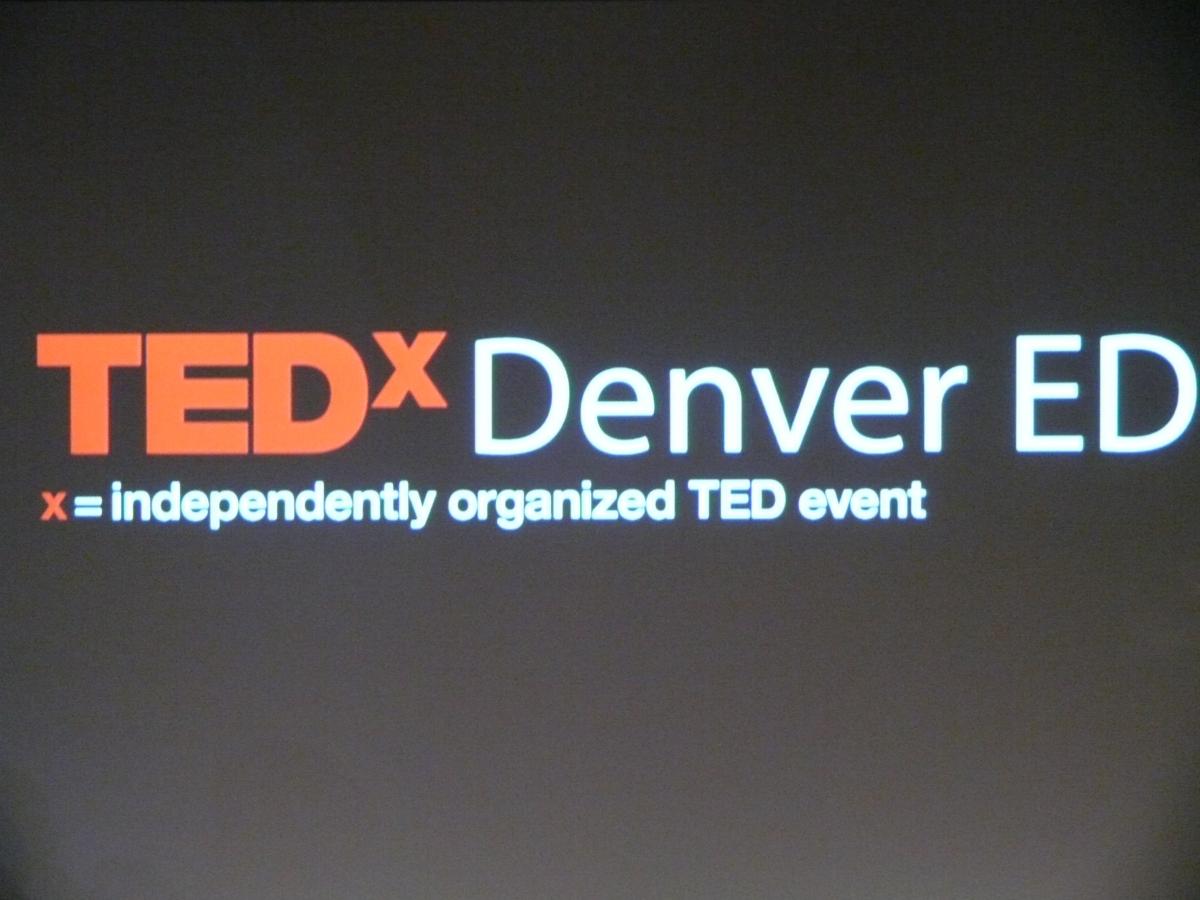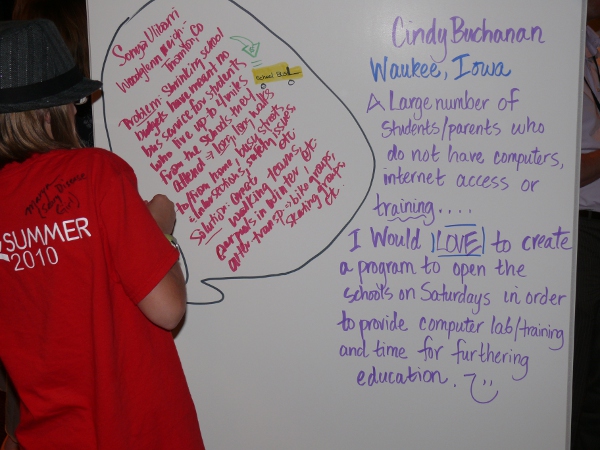At a presentation on building a successful 1 to 1 program in a school district. Presentation will be aired here eventually – http://www.mlti.org/presentations. Just writing down notes for now, as I have a lot to digest. This session was awesome, I strongly recommend you watch the entire presentation later if you weren’t able to come in person.
The first point the presenter talked about was that focusing on the teacher is the wrong goal. You want to focus on the learning the students will do, rather than the way the technology works. The details about logistics, etc… have to be framed in the context of the student use of the devices. Teachers need to be thought of as a partner with the students so that they gain training as well as the students.
Presenter is using actual examples from a classroom about why a 1 to 1 program is helpful and effective. He used an example of how you could teach the American Revolution in an American History class, but then share the learning with a class in Britain who are learning about the Rebellion. This was a great example of something that cannot be done using traditional tools.
Great example from the presenter on how not to turn technology into a tool. Students have to have a back-up device so that they are never without a laptop. Ask for a solution, not a price quote. Ask for what the devices should be able to do, rather than the minimum technical specs the devices should be able to do. Use one service provider this way you will only have 1 phone call to make whenever anything goes wrong in your building.
Focus on tool-based software, software assurances includes. Apple builds the image for their systems to make sure that it works. Keep the way you handle your logistics simple. Trying to do updates over a network might be easier for the IT professional, but it will take too long to do with a large image size. Use a thumb drive to update the systems, it can be as short as 18 minutes to reimage a single computer.
No servers, no domains, no AD/OD. Each student authenticates to their individual computer, rather than to a single location. Setting up backups is a separate issue which can be done using a different system fairly easily. Stop trying to fix individual student problems, reimage the computers when there are problems and have the students rely on their backups.
Have spare devices, send the computer off for repair, give the students the spare devices, put their work on the spare computer, and then send them on their way. Need fast turnaround on repairs. Look at trends on what needs to be repaired which will help keep costs down.
"If Deborah keeps bringing in her computer in Swahili every 3 weeks, it can be useful to have kept track of this so that you can help individual users."
Things will get damaged out of warranty. Most insurance plans do not cover vandalism for laptops. Make sure to follow the rules of the insurance. For large organizations like Maine, the cost of vandalism insurance on each laptop would be more than the cost of replacing the vandalized devices during the year.
Build your building first, put the furniture first, then build the wireless network. The furniture can interfere with your settings and wireless coverage. If you want to ensure you have sufficient coverage and you haven’t built your school yet, run cable everywhere as this is fairly cheap. You can always choose later which cable needs to be used once you have the furniture in the building.
The tighter your [internet] filter, the less happy your students and teachers will be. Try and teach digital citizenship rather than focus on restricting what the students can do. Look at software installation, what can be installed, what can. Who should run updates, who shouldn’t.
Make sure to share your leadership and vision with all stake holders, including administrators, teachers, parents, students, IT professionals,

